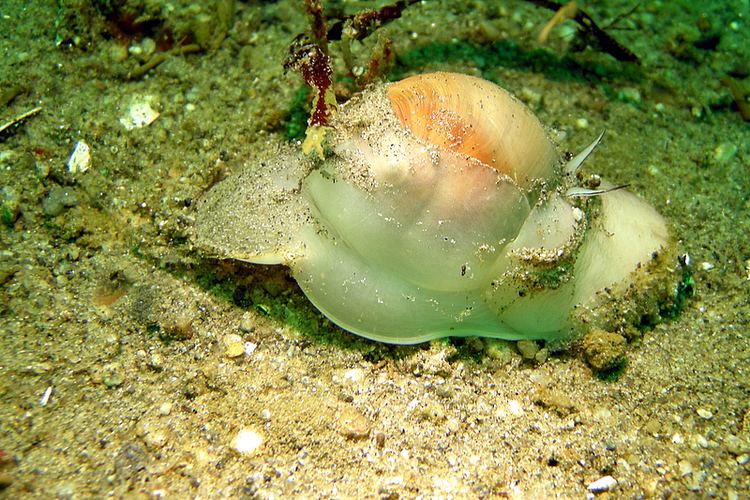Superfamily Naticoidea Rank Species | ||
 | ||
Similar | ||
Moonsnail neverita lewisii
Neverita lewisii (previously known as Polinices lewisii, Lunatia lewisii, Euspira lewisii), common name Lewis's moon snail, is a species of large operculated sea snail. It is a predatory marine gastropod in the family Naticidae, the moon snails. Traditionally, this species was assigned to either the genus Lunatia, the genus Polinices or the genus Euspira. Recently, it was assigned to the genus Neverita based on molecular data.
Contents
This is the largest species in the family.
Distribution
Neverita lewisii lives in the Eastern Pacific, from British Columbia to northern Baja California, Mexico.
Habitat
This snail is found intertidally and at depths of up to 180 metres (590 ft), usually ploughing through the substrate looking for prey.
Description
The shell of this species can grow to 14 centimetres (5.5 in) across, the largest of the moon snails. It has an extremely large foot, which when the snail is active, is extended up over the shell and mantle cavity. Part of the propodium contains a black-tipped siphon which leads water into the mantle cavity. The cephalic tentacles, located on its head, are usually visible above the propodium.
When the animal retracts its soft parts into the shell, a lot of water is expelled, thus it is possible to close the shell with its tight-fitting operculum.
Diet
Neverita lewisii feeds mainly on bivalve molluscs by drilling a hole in the shell with its radula and feeding on the organism's soft flesh.
Reproduction
Like other moon snails, this species lays its eggs in a "sand collar". The eggs may number in the thousands and hatch into microscopic larvae which feed on plankton until they undergo torsion and metamorphose the adult stage.
